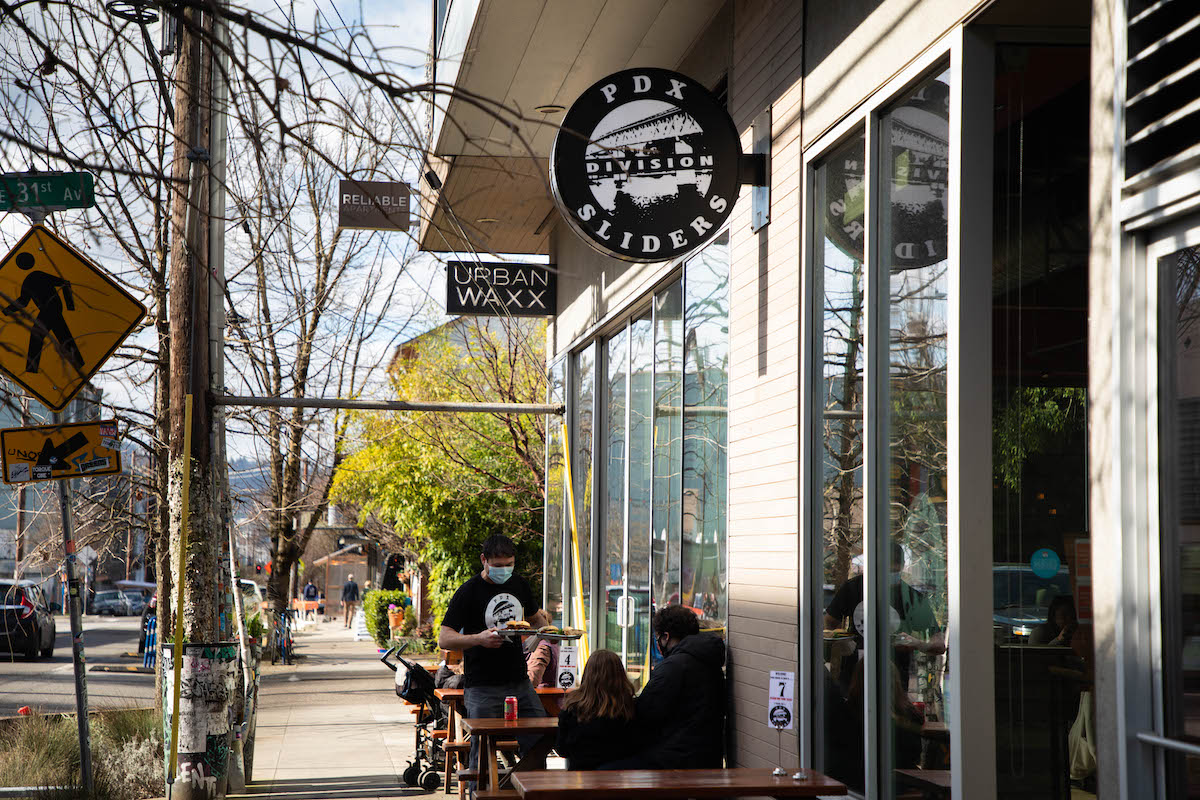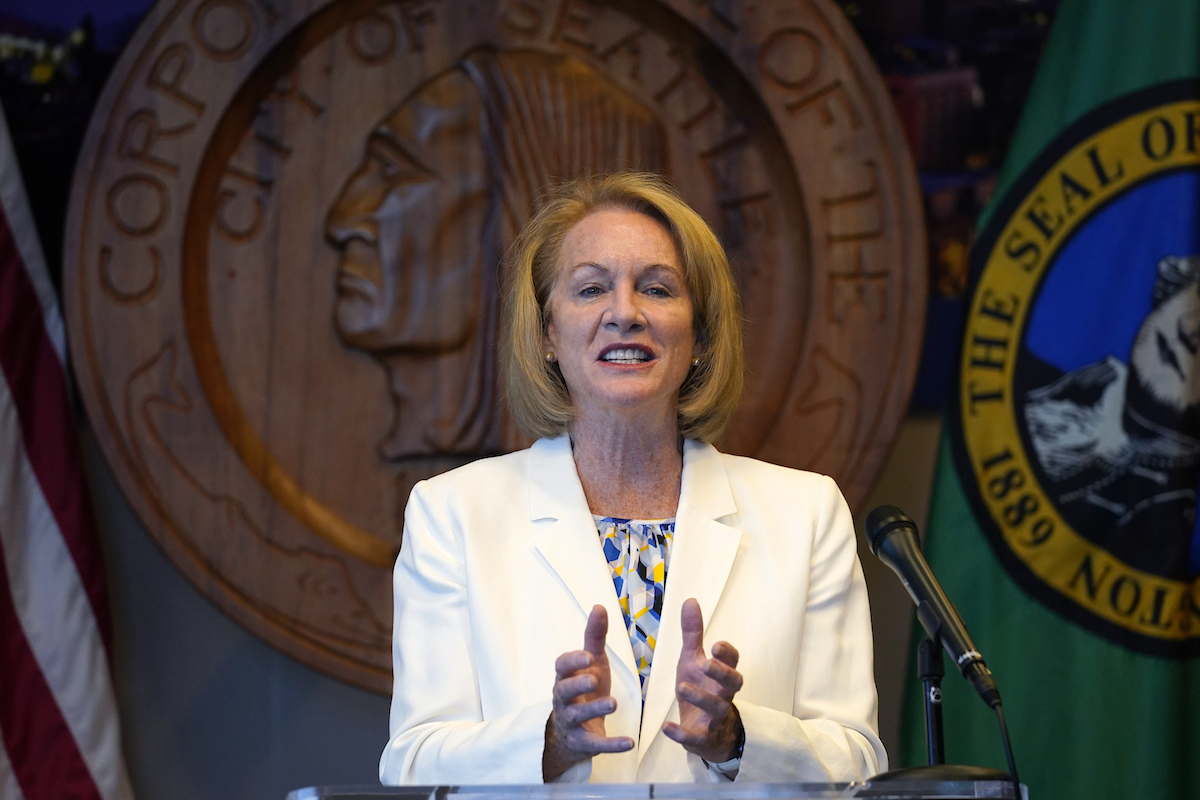After nearly a year of uncertainty and financial anxiety, restaurants throughout the Portland metro area are slowly beginning to reopen. The state government formally concluded last month that Multnomah, Washington and Clackamas counties all fell beneath the “extreme risk” threshold for COVID-19 transmission, allowing them to open at either 25 or 50% capacity, whichever number is lower. Many restaurants throughout the country continue to lean on third-party delivery apps for revenue, since they lack in-house delivery services. Since these restaurants’ ability to host in-person dining hinges on reduced COVID-19 transmission rates within their communities—a situation that remains unpredictable—it’s unlikely things will change anytime soon.
For many restaurants and businesses in Portland and beyond, COVID-19 has been the proverbial kiss of death—but it’s also, not surprisingly, been something of a boon for delivery apps, whose business in 2020 more than doubled according to a study conducted by Market Watch last year. The delivery app industry is almost entirely dominated by “the big four”—which, in order of market dominance, are DoorDash, Uber Eats, Postmates and GrubHub.
While many of Portland’s best and most iconic restaurants—from fast food and brunch to Thai and teriyaki—are offering delivery through one or more of these third-party delivery apps, the relationship between restaurant and delivery app can be tense. These challenges range from financial to the more logistical, as Adrian Caputo—owner of the restaurant PDX Sliders in SE Portland—told Portland State Vanguard.
“Grubhub is the worst, and they have been told on numerous occasions about their inability to work with businesses,” Caputo wrote over email. “They do not match adjusted order prep times. If I enter a 30 minute prep time, they still send a courier within 10 to 15 minutes, which only leads to stress and anger. The courier is frustrated they have to wait, even though I set the time for later.”
According to Caputo, the main challenge in dealing with third-party delivery apps is the lack of coordination between restaurant, app and courier. “Some [couriers] can be very rude and abrasive because they are on a schedule,” he said. Caputo says that sometimes a delivery app will lump certain items together, indicating a single, uniform prep time to the courier, even though that prep time will only apply to one item and not necessarily the entire order. Moreover, Caputo—whose restaurant utilizes multiple delivery apps—is constantly having to juggle each app’s unique interface.
He suggests one possible solution might simply be to give restaurants more control, and possibly a more direct interface with the courier: “If the restaurants could control times, or even untether orders, it may help keep couriers moving and keep orders from sitting too long.”
Fabian Avendano—the manager at the NE Sandy location of Du’s Grill, a hallowed Portland teriyaki joint—stressed that takeout is still the most lucrative and convenient for his restaurant, but that Grubhub is a runner-up, especially as it gives customers the ability to leave notes in their orders. “That’s the first one we started with, and we already adapted to its system,” Avendano said. “The little comments people leave—like ‘I love you guys,’ or just little comments like that—makes my day and the staff’s day.”
But it’s not a perfect system—Avendano says that last summer, Grubhub was taking almost 30% of their revenue from orders delivered through the app. “We were close to not even working with them anymore, because that’s a huge percentage,” he said. “That’s something that’s still very controversial here and at other businesses, because we understand it to a certain point, and I appreciate the drivers because they really make an effort, but that fee is really high.”
While they haven’t made any definitive decisions so far, Avendano says that Du’s has considered raising some of their prices to offset steep delivery app service fees, and that he expects customers to be understanding. He’s also considered adding a flat fee to the delivery charge—something that other small restaurants in Portland have been doing—which he suspects might be less off-putting than raising prices across the board. “It’s been up in the air for us, but I think adding a little fee is better than raising the prices,” he said. “Each business has their own practical way of doing things, and there’s no right or wrong way. As long as people are aware of why there’s a fee, I think that’s important, so there’s not a hidden, little fee.”
Like Caputo, Avendano is frequently frustrated with some delivery apps’ automated systems, particularly DoorDash’s—which aim to streamline the delivery process, but end up creating unnecessary tension between restaurant and courier. “Sometimes, their system just doesn’t understand anything. It’s a robot.”
At the end of the day, both restaurants emphasized these delivery apps are a temporary stopgap, necessary for keeping the lights on and getting their food out to customers at a time when very few people want to dine in whether or not it’s allowed. Avendano understands that there are people who can’t come and pick food up from the restaurant but who still want Du’s, and that’s reason enough to keep using the delivery apps, frustrations notwithstanding.
Caputo feels similarly. “For the most part, we understand that these delivery services are an extension of our customers,” he said. “Many people are not able to leave their homes, and we want them to be able to order our food from whichever delivery app they use.”







